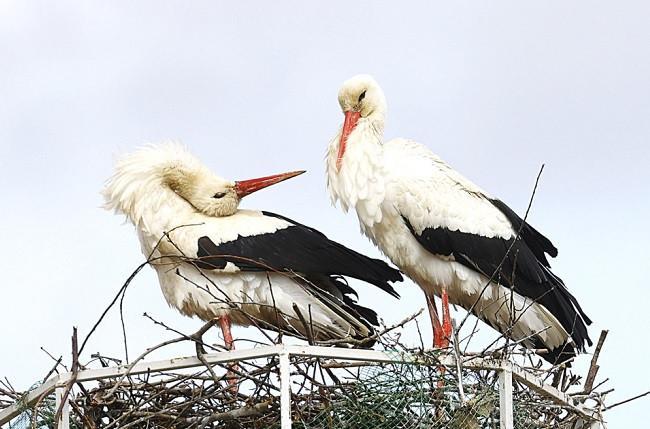
Within the scope of a project to protect the stork population, efforts are being made to build artificial nests on electric poles in the Thrace region to prevent storks from getting electrocuted.
Speaking to the state-run Anadolu Agency, Mustafa Kaya, ornithologist and academic from Trakya University’s Biology Department, said that the stork is one of the best-known bird species among people.
Stating that the storks migrate to Turkey in the spring, Kaya said, “From East Africa or southeast Africa, storks come to Turkey’s Hatay through Syria. Some of them stay in our country. Some of them go to Thrace through the Istanbul and Çanakkale straits. They migrate from Thrace to Eastern Europe.”
Kaya stated that storks’ migration dates change according to the weather temperature and that storks that come to the Mediterranean in early February arrive in Thrace in March.
“There has been a threat to storks lately. The most important threats are that the wetlands dried out with pesticides and the development of residential areas. Storks usually nest in residential areas, electricity poles, roofs, or on trees. As the habitat shrinks, there will be a decrease in the stork population. There has been a recent decline in the stork population.”
Kaya stated that they identified approximately 400 stork nests within the borders of Edirne.
Highlighting that storks nests on electric poles cause short circuits resulting in the death of storks and transformer explosions, Kaya said, “To prevent this, we recommend artificial nests.”
“Within the scope of the project we previously carried out with the Energy Market Regulatory Board, we determined pilot regions in Edirne and Tekirdağ. We are planning artificial nests on electricity poles in villages located in these pilot areas. We will place artificial nests there this year and next year. We will investigate how these nests affect the stork population and share the results. There are artificial nests at some spots in Edirne, but not too many,” Kaya said.
He pointed out that there may be a delay of 15 to 20 days in the migration dates of storks, adding, “This is because of climate. When they come to cold weather from hot weather, storks face great danger. This cold weather can also cause death. I don’t think that the storks, who came to Thrace this year, will be affected much by today’s climate conditions. Recently, with the effect of global climate change, we see that some of the storks have not migrated.”